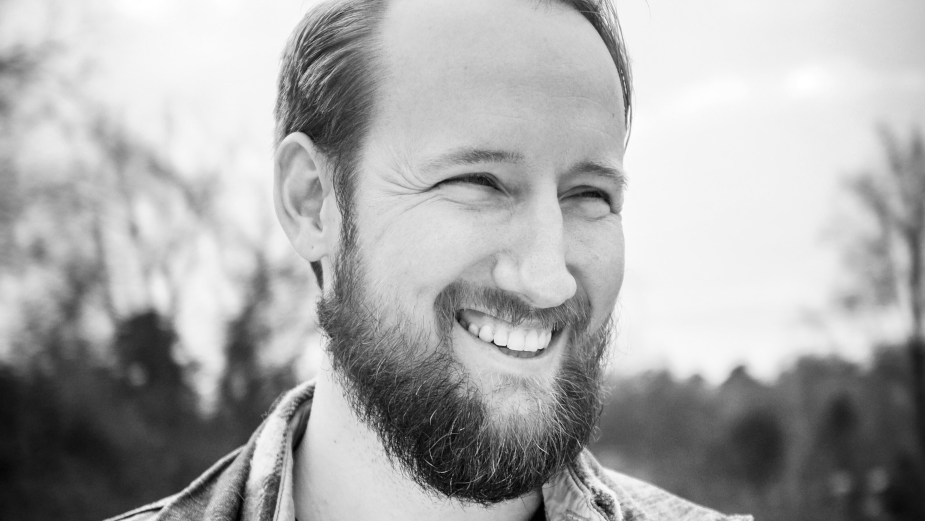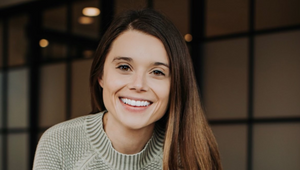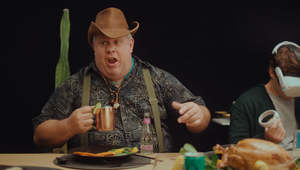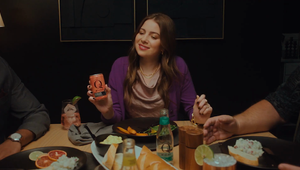
Finely Sliced: Learning to Trust Your Gut with Andy Peters

Andy is a film and commercial editor, and the founder of Open Water Post, an editorial company based out of Nashville, TN.
Born in the Midwest and raised on a steady diet of westerns and classic WWII films, Andy had his sights set on filmmaking at a young age. After graduating from college, he moved to Los Angeles where he spent the better part of decade honing his craft alongside top tier creative talent before moving his family to Nashville, TN in 2018.
His advertising experience includes work for brands such as Sony, Amazon, ShakeShack, TripAdvisor, Skechers, Coldwell Banker Real Estate and more.
In the documentary space, he has worked on the PBS show Connected: A Search for Unity, and the Fiverr-sponsored Out North, a short doc that earned a Vimeo Staff Pick in 2021
He most recently locked picture on a short film called The Ali’i King which will premiere sometime later this year.
LBB> The first cut is the deepest: how do you like to start an editing project?
Andy> I like to look over the creative first and get a feel for how I might want to tell the story, and then get on a call with the director or creative team and get a download from them since it’s ultimately their vision. From there, I like to have at least a few days by myself - time permitting - to get an initial assembly done, and then we’re off to the races.
LBB> Non-editors often think of editing just in technical terms but it’s integral to the emotion and mood of a film. How did you develop that side of your craft?
Andy> It’s just been an ongoing process of learning to trust my gut. Early on, I stuck to the editing 'rule book' and just followed the boards or did what I thought the creatives wanted me to do. Then they would give notes and I would think to myself “Yeah, I remember feeling the same way about that take when I watched through the footage,” or “I knew I should’ve cut out of that shot sooner.” Basically, I started recognising that I need to pay closer attention to how the footage affected my emotions, and then react accordingly. The director, or creatives may give notes that are counter to some of those instinctual choices but I often find that you somehow find your way back to that original idea or feeling.
LBB> How important is an understanding of story and the mechanics of story?
Andy> It’s definitely important. It’s always good to learn the so-called rules before you start breaking them. But I also don’t necessarily believe you have it all sorted before you make your first cut. I studied film and storytelling in school and throughout the beginning of my career, and have always been interested in it; but as most professionals would tell you, most of the actual learning comes on the job.
LBB> Rhythm and a sense of musicality seem to be intrinsic to good editing (even when it’s a film without actual music) – how do you think about the rhythm side of editing, how do you feel out the beats of a scene or a spot? And do you like to cut to music?
Andy> The rhythm of an edit really depends on the content. If the music is central to the spot or scene, then it’s obviously fine to allow that to drive the pacing of your cuts. And in those situations, there’s likely been discussion about that featured track before the shoot even happened. Often though, we have to find the right piece of music after the fact so I think there’s something to be said for feeling out the rhythm of the footage itself first, and then finding a track that fits.
LBB> Tell us about a recent editing project that involved some interesting creative challenges.
Andy> I recently locked picture on my first narrative short film. Just the fact that it was a new experience for me meant it would be challenging, and it was, but in the best way. I had a blast working on it!
I’d say the biggest challenge was the run-and-gun style in which it was shot - two cameras over hundreds of miles of Utah in four days. As you can imagine, production was flying so there were some shots that I felt would’ve helped to have in certain scenes and they just weren’t there. There were a few moments where we had to get creative with finding a reaction shot or an establishing shot that we didn’t really have. There was also scene where we decided to completely remove a character, which was interesting because she is standing in a group talking with some of the other characters. We weren’t sure it was going to work but in the end I think it turned out nicely.
LBB> In the US we know that editors are much more heavily involved across the post production process than in Europe - what’s your favourite part of that side of the job?
Andy> I really enjoy jobs that involve 2D animation. It’s not something that I do myself but I love to collaborate with talented artists and give feedback once it’s integrated into the edit. I’d love to get more of that work flowing through my company.
I’ve also found myself having to handle colour more on lower budget jobs which I’ve enjoyed. I do think it’s good to get your hands dirty in the other areas of the post process and learn on the fly.
LBB> What’s harder to cut around – too much material or not enough? (And why?)
Andy> I suppose the quick answer is to say that not having enough material is more difficult, but really, it’s not bad so long as you have enough of the right material. I think the only time having too much material might be annoying is when you’re working on a very tight turnaround.
LBB> Which commercial projects are you proudest of and why?
Andy> I’m very proud of my most recent work for Wyoming Tourism, which I cut for Stept Studios and Lockt Editorial. There were four portraits, and the one I cut focused on the Oldham Family and the Wind River Wild Horse Sanctuary. I’m a big time fan of classic Westerns and the whole genre in general, so getting to work with beautiful imagery of the West - cowboys saddling up at the crack of dawn, sweeping drone shots of wild horses running, roping cattle, etc - I felt like a kid who’d been handed the keys to the candy store. My favourite part of that job though was working on the sound design in the offline. I just saw the final edit for the first time (the job was last year), and while I’m sure they swapped out some of the effects I used, I was proud to see that for the most part, the sound design stayed the same.
The Tennessee State Parks spot I worked on with Gear Seven and director, Connor Carroll is one that has gotten a lot of positive feedback for me. That’s a spot where the music really drove the edit. We loosely set the pace and then the composer and Connor - also a composer - created a final piece of music that really brought it all together. Connor and I have such a great rapport too so I love working with him. He’s a very talented director, and also happens to be one of my closest friends so I think that helps.
The last one I’ll throw out there is the Sony Alpha Five Fundamentals project. The final spots are the product of a lot of experimentation in a very collaborative environment. I loved the process and the team, and was very happy with the end results.
LBB> There are so many different platforms for film content now, and even in advertising something can last anything from a few seconds to a couple of hours. As an editor, are you seeing a change in the kind of projects you’re getting from brands and agencies?
Andy> I don’t know if this could be considered a recent change, but I do find myself thinking more about the first five to six seconds of an edit than I ever did before. These days, you really have to grab peoples’ attention right out of the gate.
LBB> Who are your editing heroes and why? What films or spots epitomise good editing for you?
Andy> Tom Cross (Whiplash, La La Land, No Time To Die). His work speaks for itself, but I can’t think of a film that he’s cut that I don’t like. As I mentioned before, I’m a huge western fan, and one of my favorites is Hostiles which he cut. He’s also a lover of Bond films like myself.
I also want to give a shoutout to the guys that trained me up as a commercial editor in LA - Tommy Park, Zak Kinzinger, and Chris Hall. You guys are my heroes!
As far as well-edited films go, I finally watched Sound of Metal. The editing is very good, but I think the biggest thing that stood out to me - and most people - on that film is the sound design. Aside from the performances, it makes the film. Hands down.
LBB> How does editing in the commercial world differ from the film world and TV world?
Andy> Early in my career, I thought that there was a hard line dividing the two, but after having the chance to cut in both, I feel that line is definitely blurred. There’s typically more time on films which means there’s more room for exploration in the edit, and I think having had that ability to explore more helped to grow my confidence when making edit decisions which has allowed me to work faster in commercials.
LBB> Have you noticed any trends or changes in commercial editing over recent years?
Andy> More and more jobs coming across my desk with larger deliverable matrices due to the plethora of various platform requirements. It can get crazy, but it’s the nature of the beast though. You gotta keep up!















